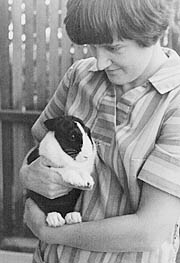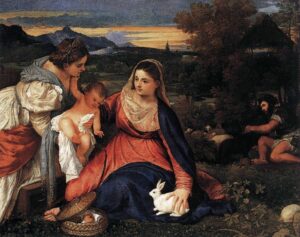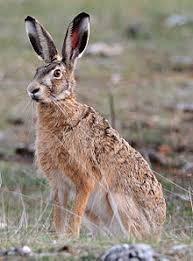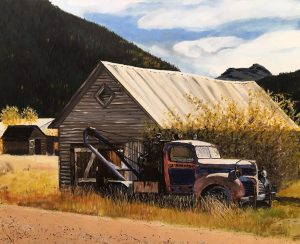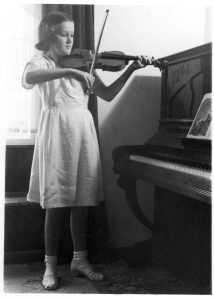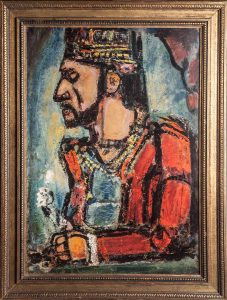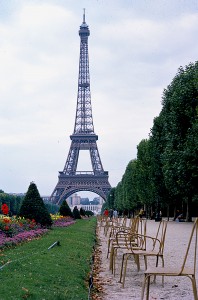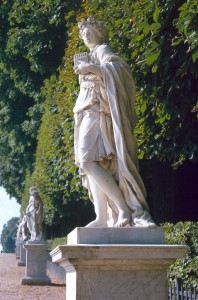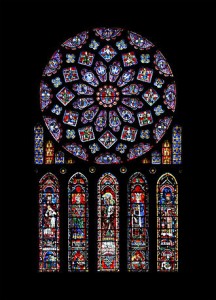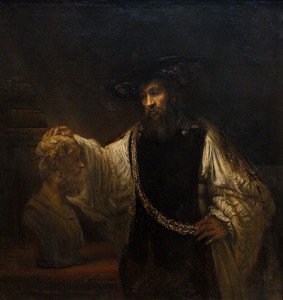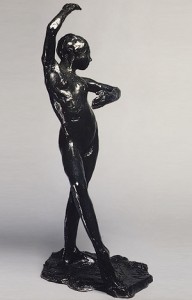Archive for the ‘painting’ Category
The Easter Bunny mystery
How could my husband and I be so mean as to deny our kids the Easter Bunny? I frowned as I reread the letter to my parents stashed in my old black filing cabinet.
12 April 1971
The kids are back at school today after their week of Easter vacation. The weather has been so beautiful and spring-like. This is something I couldn’t really understand until I came to the northern hemisphere—the significance of Easter as a spring festival—the death and rebirth of the god that is an important part of almost every religion there has ever been. Here a big thing at Easter is the Easter Bunny, who is alleged to bring baskets of candy eggs and goodies to kids on Sunday morning. This Tony and I just can’t go along with—somewhat to the kids’ disappointment, I think, though we do buy them a fancy Easter egg, and of course we have the fun and mess of dyeing hard-boiled eggs and hiding them in the garden for an egg hunt. I did allow Simon to share our pet rabbit at school one morning. Bun-Bun was less than enthusiastic about the whole project, but the children were ecstatic.
Part of the reason for our rejection of the Easter Bunny was that Tony and I grew up in New Zealand, where rabbits were despised as pests. Brought by early settlers to a place with no natural predators, their population quickly reached plague proportions, causing major erosion problems. We did have Easter eggs, but given that we celebrated the festival in the Southern Hemisphere autumn, they had no significance other than as a source of sugar and chocolate. Even living in California, we couldn’t see any connection between rabbits and the Christian celebration of the Resurrection. I decided this week to look into the question. I quickly found myself down a fascinating rabbit hole of customs, beliefs, and theories, many of them contradictory.
How the Easter Bunny came to the U.S. seems pretty clear. According to several sources, the creature first arrived in America in the 1700s with German immigrants who settled in Pennsylvania and transported their tradition of an egg-laying hare called “Osterhase” or “Oschter Haws” who brought colored eggs to good children at Easter. As the custom spread across the U.S. the hare somehow transformed itself into the more familiar rabbit and its Easter morning deliveries expanded to include chocolate and other types of candy and gifts.
The hare’s (or rabbit’s) connection with Christianity are more complicated. For the first few centuries, the Christian festival coincided with the Jewish Passover, which is when the historical events surrounding Jesus’s death occurred. Though the Christian calendar has since been modified, both festivals are still close to each other in spring. Both are based on a lunar calendar; the date of Easter was defined in 325 CE by the Council of Nicaea as the first Sunday after the first Full Moon occurring on or after the vernal equinox. In Anglo-Saxon regions of Northern Europe, the Christian festival seems to have merged with a pre-existing equinox festival honoring Eostre, the goddess of spring, and Christians continued to use the name of the goddess to designate the season. Since hares and rabbits give birth to large litters in early spring, they have long been recognized as symbols of the rising fertility of the earth at the vernal equinox.
No, no, no, say some Catholic writers. The Easter Bunny has Christian origins. The ancient Greek philosopher Aristotle observed that the hare could conceive again while pregnant, thus shortening the time between litters and delivering more offspring during a breeding season. Later Greek writers such as Pliny and Plutarch expounded the notion that hares (and rabbits, by association) were hermaphrodite, and thus could self-impregnate and reproduce as virgins. During the medieval period, hares and rabbits began appearing in illuminated manuscripts and paintings depicting the Virgin Mary, serving as an allegorical illustration of her virginity.
Two pregnancies at once? Intrigued, I veer into another passageway of my research rabbit warren. It turns out that, as the Smithsonian Magazine put it, “Aristotle got it right: the European brown hare (Lepus europaeus) can get pregnant while it’s pregnant.” In 2010, scientists of the Leibniz Institute for Zoo and Wildlife Research (IZW) in Berlin, Germany, led by Dr. Kathleen Roellig, published the results of their study. Using selective breeding and high-resolution ultrasonography, they showed that a male hare can fertilize a female during late pregnancy. The resulting embryos will develop around four days before delivery of the first pregnancy. To quote from the Smithsonian article: “The embryos don’t have any place to go at that time, however, since the uterus is occupied by the embryos’ older brothers and sisters. So the embryos hang out in the oviduct, rather like when you wait in your car for a parking space to open up. Once the uterus is free, the embryos move in.”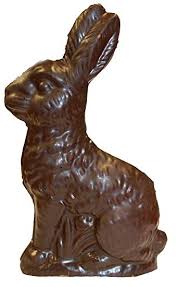
My head is spinning. I think I need chocolate.
The appeal of the picturesque
I’ve been wondering: what is it about an old house or barn that appeals so much that we describe the scene as “picturesque.” The question came up as I reread a January 1970 letter to my parents describing the purchase of a house in Cupertino, CA. Our new home was a typical early 1960s tract house with scalloped trim and prominent garage. The place was certainly not picturesque, but it was within our price range. I wrote:
It’s a very nice little house – 3 bedrooms, 2 bathrooms, big sitting room with dining area at one end, small family room opening to a neat little kitchen, 2-car garage with laundry facilities in it. Very attractive inside, though not very prepossessing from the outside. However, this is just a matter of landscaping – other houses in the street are just lovely, but the garden of this one is just bare grass.
Looking back on that time, what comes most vividly to mind is another house I saw while house-hunting, a charming old farmhouse dating from the time when the Santa Clara Valley was so full of orchards it was called “The Valley of Heart’s Delight.” As I walked through with the realtor, I paused in what must have been a utility porch and mud room. The unfinished walls of the room were black with mold. The realtor shrugged when I pointed it out. The price was right, but I chose not to make an offer.
There’s a significant difference, of course, between the picturesque, which has been defined as that kind of beauty which is agreeable in a picture and a habitable structure for humans. But what is it in the human psyche that is drawn to the antique? Rummaging around on the web, I found quotes such as:
(esp. of a place) attractive in appearance, especially in an old-fashioned way
A picturesque place is attractive and interesting, and has no ugly modern buildings.
My friend Sandy Peters says it well. Commenting on a Portola Art Gallery exhibition of her husband Jerry Peters’ paintings of old battered trucks in rural settings, she wrote: They demonstrate how the beauty of nature blends seamlessly with the wisdom of age.
However, with age comes death. When we first moved to Mendocino seventeen years ago, a cabin stood among the trees along Highway 128, not far north of Yorkville. Its bare board were gray with age, the sway-backed roof shingles covered with moss. Over the years, the roof has slowly caved in, until now the cabin is a jumbled pile of boards. At first it was picturesque. Now when I drive by, I am sad.
The place of art
What is art, and what place has it had in my life? This was the assigned topic for the first set of high school student essays I graded in my first paying job in California. In those days, the late 1960s, California schools had enough money to hire readers to relieve teachers of the time-consuming task of grading papers. I worked primarily with Millicent Rutherford, the Humanities teacher at Lynbrook High School, in the Cupertino Union School District. Over time, we developed a warm friendship.
I was saddened to learn that Millicent died last October, at the age of 91. Her obituary notes: “She will be remembered for her glittering sense of style, her sharp wit, and her boundless energy.” A 1991 Los Angeles Times article on remembering teachers who made a difference includes an anecdote by Stephen Bennett, CEO of AIDS Project Los Angeles:
“We’d study Italian art and [Ms Rutherford] would get . . . photographs from some of the Pompeian paintings that are not typically looked at—the parts of Pompeii they won’t show you because the graphics on the wall are what Americans would consider lewd. And she’d show up in a Pompeian red dress to start the day.”
To honor Millicent’s memory, I’ve been thinking about how I might respond to her essay topic.
When I was the age of Millicent’s students, music was my passion. I played second violin in my town’s municipal orchestra. At my first concert, the orchestra tackled Beethoven’s Symphony No. 5. It must have sounded decidedly amateurish. But the experience of being a part of that magnificent work, of sharing the language of music with my fellow musicians and with an audience, is a thrill that has always stayed with me.
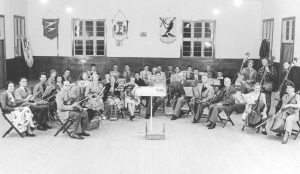
Tauranga Municipal Orchestra at rehearsal in the high school assembly hall, c. 1952. I am in the front row, just to the left of the podium.
Painting too speaks a language without words. On the wall of my office is a reproduction of Georges Rouault’s “The Old King.” I saw the original fifty years ago, at the National Gallery in London. Friends I had come with moved to another room without me as I sat on a gallery bench, weeping. I still weep inside when I look at it.
Concerts, theatre, dance performances and visits to art galleries have always been a major part of my life. The written word has been my personal art form. To struggle with the lines of a poem, to convey emotional meaning through images, leads me to a personal answer to the question: “What is art?” For me, it is a way of sharing what is meaningful in our lives.
The last time I saw Paris
An old letter from my black file cabinet brought back memories of a brief vacation in Paris in 1962. Rereading the headlong, crammed-onto-the-page text, I hear again the breathless voice of a wide-eyed young traveler falling in love with the city of light.
I’ve not been back to Paris. It’s likely I never will. But, as in the old Jerome Kern song, I’m happy to remember her as I saw her back then.
Listen to Dame Kiri Te Kanawa
singing “The Last Time I Saw Paris.”
Windsor, 24 Sept
Dear Mum & Dad,
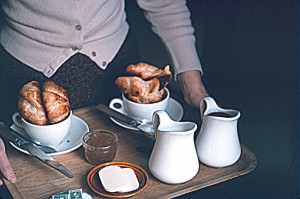
Breakfast tray at our door each morning: croissants with butter and jam, café au lait–the height of luxury.
Back home in England again, and not particularly pleased to be back to these bleak autumnal mists, and a real stinker of a cold to go with it—first cold I have had for ages. We had a wonderful week in Paris, and fell in love with the city. Left very early Monday morning—rose before the sun, about 5 am, and took off at 8 in a Caravelle, a very fast French jet plane, which landed us in Paris before 9 – though it was after 10 by the time we got to our hotel, which was in a little side street off one of the main boulevards. Rather noisy, at least for the first night, as it was close to the great city market, which does its business in the small hours of the morning. The second night we didn’t even notice it. Nice room, with a balcony from which we could watch all the goings-on in the street below—most entertaining. We spent practically every day walking—the number of miles must be pretty high. First morning we went down to the old centre of the city, the Île de la Cité, an island in the Seine, and had a look at Notre-Dame—I hope you got the postcard I sent you of it. Spent the rest of the day pottering round the island, along the banks of the river to the Tuileries, and back by a more or less circular route to the hotel. The next day we went up to the north side of the city, to the hills of Montmartre—fascinating streets, most of them ending in steps, somewhat like parts of Wellington, and with graceful balconied buildings with the plaster peeling off. About midday we went out to the woods of Boulogne, a huge park just out of the city, where we watched workmen playing at bowls in their lunch-hour. It is a sort of grown-up marbles, played with heavy steel balls that you throw to knock out the kitty. Then we went back to the Arc de Triomphe and walked down the Champs Elysees—lots of interesting shops, and the wide street incredibly tightly packed with vehicles—you look down the street and you see nothing but a sea of car roofs. Traffic in Paris is very thick, very, very fast (no speed limits) but amazingly well organized. Pedestrians beware though—they are very much second class citizens, and boy do they hop when the traffic starts to move. Anyway, back to Tuesday—later in the afternoon we went over and had a look at the Eiffel Tower—a remarkable piece of engineering. We didn’t go up it, however—we had already seen enough views of Paris from above, and weren’t very keen on its reputation for swaying.
The next day we met my college friend John Wilson, who is at present living in Paris, and he took us out for the day in his little car, one of the new utility model Citroens. You may not have seen them in New Zealand. A chopped-off little bug, a bit ugly, very mass-produced, but able to go anywhere, very cheap, and very comfortable to ride in. There are thousands of them in Paris. Went first to Versailles, to look at the palace where the king and Marie Antoinette were taken from to have their heads chopped off. A most impressive building (though we didn’t have time to go inside), and the gardens are incredibly beautiful, in a cool, formal sort of way. Mostly vistas of fountains and pools, with statues, with a few formal flower beds, and woods beyond, laid out with a grace and elegance unknown to these more democratic times. We could have stayed there just wandering all day, but had to get going again, through side roads and quaint little villages. We had lunch in one, at a street café in the village square, just outside the gates of a very charming old chateau, whose towers were reflected in the canal close by. Then on to Chartres. The cathedral stands on a hill overlooking the plain, where there has been a church since the third century. This one was built in the 13th century, and was remarkable in that, except for part of one tower, which is noticeably odd, it was completed in thirty years. Outside very elaborate and impressive relief carvings in the porches, lots of gargoyles and what not.
You go inside, and it seems at first quite dark. Then gradually, as your eyes get used to the light, the huge pillars begin to appear, lit up by a pale greenish, strangely luminescent glow. Then you look up, and are practically dazzled in the burst of red and blue and green. The stained glass windows of Chartres are said to be the most magnificent in the world, and I can well believe it. To the north, south and west are huge rose windows, and all around are arches, each closely worked with many little pictures of saints, in incredibly fine detail. The result is a blaze of pattern and colour.
Then back the sixty miles to Paris, through wide open fields—no fences in this region, and the land is fairly bare of trees, and with a very gentle swell. It is a grain growing area—lots of harvesting machinery, and everything a beautiful golden colour—even the soil is the same colour as the wheat stubble. The next day we went to the Louvre museum, or at least to a small annexe, the Impressionists gallery—Van Gogh, Renoir and co., and discovered again the beauty of many of the paintings that we had thought a bit hackneyed in reproduction—things like Degas’s ballet pictures for instance—very beautiful and subtle in the originals. Spent all morning there, and in the afternoon walked over to the other side of the city, to see the UNESCO building, a very fine modern building. Our favourite part of it was a Japanese garden in the grounds, a little area of different levels and contrasting textures of stones and gravels, a stream and a pond, and a few bushes. Sounds rather stark and uninteresting to describe, but the result was charming, and very peaceful and relaxing. Friday back to the Louvre, to the main museum this time, but when you think that each of the wings of this is about a mile long, with several intersecting galleries about half a mile across, and all several stories high, you will realise that we didn’t see much of it, and even what we did see—mostly Assyrian, Egyptian, Greek and Roman antiquities, there were so many fascinating and beautiful things to look at that we didn’t do them justice—excuse for going back! Later in the afternoon we had to think of getting ourselves back to the airport. Bought some beautiful (smelly) French cheeses from one of the many street markets, then got out to the airport to catch our plane at seven. Wonderful to see the lights of London as we flew over the city—when we got under the cloud, that is. Very exhausted by the time we got home, but still wouldn’t mind doing it again. Though went into London yesterday, to see [our friend] Bill, an exhibition at the Tate, and a concert at the Festival Hall, and decided that London was rather lovely too.
Vive la France! Love, Maureen
Art stuns like a hammer blow
With gold velvet drapery as backdrop, the newly acquired Rembrandt, “Aristotle Contemplating the Bust of Homer,” stood on an easel in the foyer of New York’s Metropolitan Museum of Art. Spotlights accentuated the golden glow of the painting’s surface. As I gazed, I felt a resonance with the feelings of the person depicted, my thoughts drawn into his as if into a dizzying vortex. I was astounded that brushstrokes and pigment could have such power to move me.
I had not seen great art before, except in books of reproductions. I had devoured the collection of large format books in my high school art room, and spent hours browsing the art section of secondhand book shops when I was in college. When we left New Zealand in 1962, Tony and I had as a priority to visit art museums and see the work of artists we admired. But nothing had prepared us for being in the presence of the real thing. Upstairs at the Metropolitan Museum of Art we found a whole room of Rembrandts. Dancing down a broad staircase, a whole series of bronze sculptures by Edgar Degas. We saw so many great works we discovered the phenomenon we named “mental indigestion” and wished we had more time in the city so that we could come back. We knew it would take weeks, months even, to absorb all this museum had to offer.
We visited other art museums during this stopover in New York on our way to England. Some we loved, some less so. In a letter to parents I wrote: “Sunday afternoon we went out to The Cloisters, which is right up at the northern tip of Manhattan. This is a religious museum. Parts of the remains of many old churches of Europe have been brought across and incorporated into the present structure, which keeps as closely as possible to the original styles. In a sense it is a success – some of the old fragments of stonework are very fine, and there are some very fine paintings, altar ornaments, and some magnificent tapestries – the highlight of the whole exhibition. But in spite of their attempts to reproduce chapels, all sense of reverence has been lost – the things are a curiousity for the locals to gawp at, and even sacrilegious.”
As I look back on these youthful letters and these memories, I see opinions about what matters to me already forming and clarifying. Many more experiences of the power of art would come in future years: sitting on a bench in a crowded London gallery, weeping over Georges Rouault’s “The Old King;” gazing in awe at the rose window in Chartres Cathedral; feeling the silence of the Blue Mosque in Istanbul. Always, enriching these experiences, the memory of that stunning awakening in New York.
